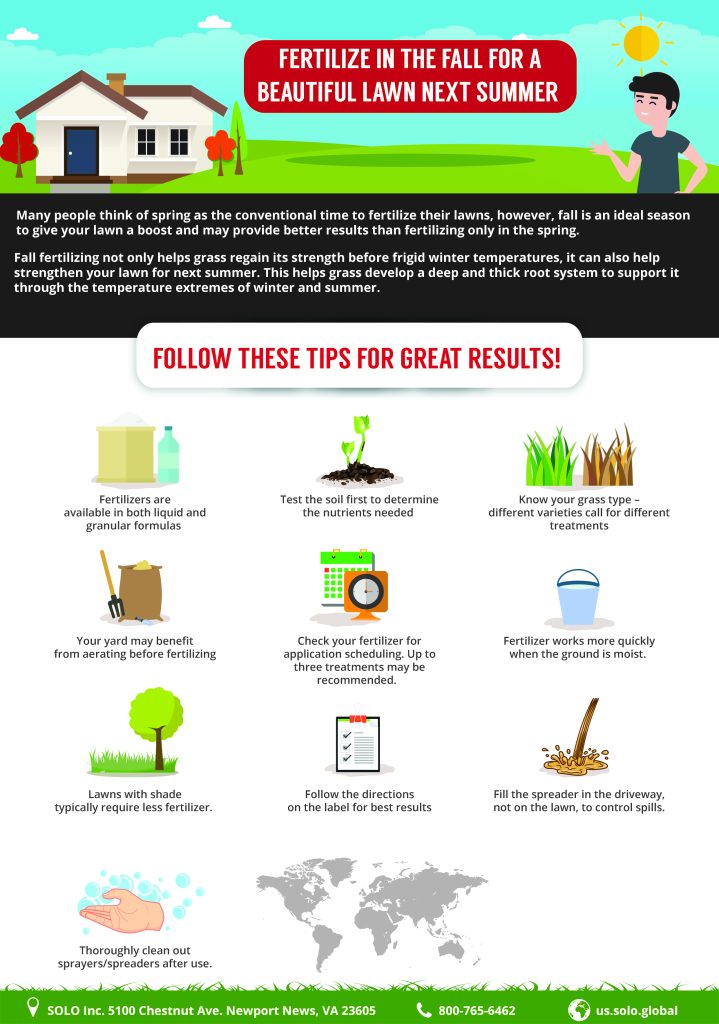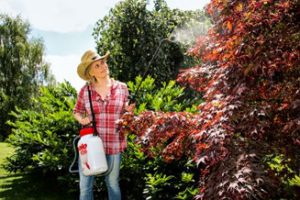
Fall is an ideal time to fertilize your lawn, especially for lawns with cool-season grasses. Summer is tough on grass, and fall fertilization can help strengthen your lawn before winter.
Apply fertilizer when grass grows the most. Cool-season grasses grow the most in the fall and spring and go dormant in the summer. Warm-season grasses grow in the summer but go dormant in the late fall and winter.
What Nutrients Does My Lawn Need?
Do a soil test to determine what nutrients your lawn needs. You should consider a soil test if you’ve never done one, or you haven’t done a test in more than three years. Soil tests measure the pH level of your soil and levels of phosphorus and potassium. However, most soil tests do not measure nitrogen levels.
Nitrogen
Nitrogen is key to a healthy lawn. There are general guidelines to help you figure out how much nitrogen you need. The size of your yard will determine the amount of nitrogen to apply.
For cool-season grasses, the University of Maryland Extension suggests no more than 0.9 pounds of nitrogen per 1000 square feet for a single application, and no more than 1.8 pounds of nitrogen per 1000 square feet a year. The Purdue University Extension suggests about 1 pound of nitrogen per 1000 square feet, and anywhere from 1 to 5 pounds per 1000 square feet annually.
Other things to consider with nitrogen are lawn age and sun exposure. According to the Purdue University Extension, older lawns that have been fertilized regularly for ten years need less nitrogen. Shaded lawns need up to 50 percent less nitrogen.
Choosing A Fertilizer
Once you calculate your lawn’s nutritional needs, you can choose a fertilizer. Fertilizers consist of three main ingredients: nitrogen, phosphorus, and potassium. Each ingredient serves a different purpose for your lawn’s overall health:
Nitrogen (N): Promotes growth and leaf development.
Phosphorus (P): Promotes root development.
Potassium (K): Increases disease and drought resistance.
Fertilizer bags indicate the percent of each nutrient in the bag. For example, 9-0-2 fertilizer is 9 percent nitrogen, 0 percent phosphorus, and 2 percent potassium.
Check out tips on how to fertilize your lawn below:

Useful Links:
University of Maryland Extension: https://extension.umd.edu/hgic/topics/lawn-fertilizing
Purdue University Extension: https://www.extension.purdue.edu/extmedia/AY/AY-22-W.pdf

